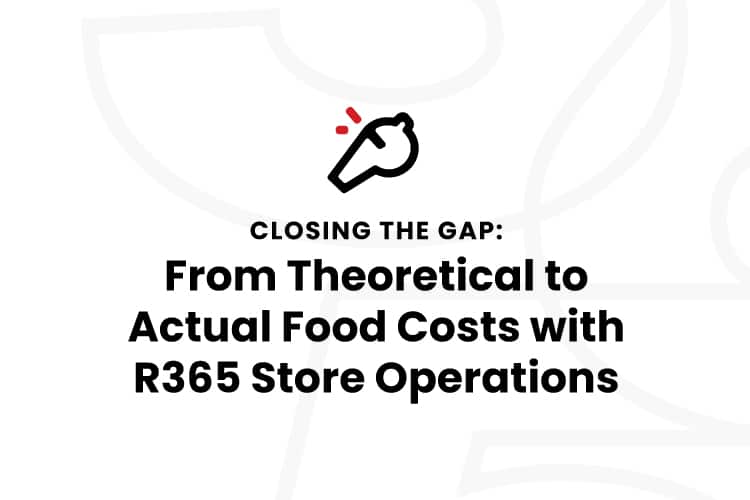Almost all of the coverage about the effects of COVID-19 on the restaurant industry has either been sweeping generalities or focused on a specific restaurant or chain. We’d like to add some helpful data to the conversation. Below are the COVID-19 related insights and trends we are seeing based on summary sales data drawn from our diverse customer base of restaurants.
A note about this data: Restaurant365 has a unique vantage point. One function of our restaurant management software is to pull each restaurant’s sales data into our system so operators can get an accurate financial picture of their business. Our customer base includes more than 12,000 restaurants across all 50 states with close to 100 point of sale vendors represented. In addition, our data spans various restaurant types, including fast casual to fine dining and everything in between. It includes large chains, franchisees, franchisors, independent multi-units, and your favorite neighborhood café.
Here is our goal: To provide you with the clarity you need in this uncertain time to help you make better decisions. We’ll do so by providing insightful, constantly updated data accompanied by our assessment and best insights. We will update the data in our live, restaurant industry trend dashboard on a weekly basis so that together we can see when the upturn starts.
Based on our data, here is overall sales trend for restaurants
The decline in restaurant sales from the week ending March 8 is very steep. The total decline from that week to the week ending March 29 is 78.3%. The following table shows the decline in sales week by week.
It’s clear that the biggest decline was in the week ending March 22, which coincides with many counties and states putting in place stay-at-home guidelines and ordering restaurants to cease dine-in service. It’s important to understand that this data includes restaurants that have closed, which makes the decline appear steeper. (Below, we look more closely at restaurants that remain open.)
March 11 marks the point when sales started plummeting
When was the tipping point? Our data shows that sales the week ending March 8 were already down 5-10% from the previous year. However, March 11 was really the tipping point for restaurants. To understand this, first look at what sales at a restaurant looks like in a typical week.March 11 sales rise from Monday/Tuesday as expected but March 12 (Thursday) does not increase as expected and although March 13 (Friday) and March 14 (Saturday) do provide a bump, it is not nearly the bump that a typical Friday/Saturday sees.In retrospect, this makes sense as a slew of medical, political, economic and cultural news came out on March 11 including:
- The World Health Organization declaring the coronavirus outbreak “can be characterized as a pandemic”
- Trump announced a new restriction on many foreign travelers
- Dow Jones Industrial Average officially entered a bear market
- The NBA postponed its season
- Tom and Rita Hanks announced they tested positive for coronavirus
Here’s how many restaurants have closed their doors
Restaurants are faced with the choice of converting to a delivery and takeout model with significantly lower sales or closing their doors temporarily to ride out the pandemic by conserving cash. Our data shows a steady increase of restaurants closing their doors, particularly during the week ending March 22. This chart shows that number to have flattened out to approximately 45% for the week ending March 29. This is in line with numbers shared recently by the National Restaurant Association.
A particularly interesting dynamic to note is the state-by-state variation in the data. The following data shows us closures as of March 30 for the eight most populous states. Ohio (29.1%), California (36.2%), Texas (37.9%) and Florida (42.2%) have below average restaurant closures.
Meanwhile, Georgia (51.7%), Illinois (53.6%), and Pennsylvania (62.5%) have higher than average closures. The highest rate of closures is in New York at 70.4%.
How are open restaurants doing?
We’ve reviewed overall restaurant sales, the tipping point, and closures. But how are things looking for restaurants that remain open for delivery and takeout? Our data shows some important insights:
- Restaurants that remained open bottomed out with a 68% decrease in YoY sales on March 22.
- This decrease is better than the overall 80% sales decline the industry has seen.
- In the week ending March 29, YoY sales (for open restaurants) are down roughly 60%.
- This increase of 8 percentage points indicates sales have stabilized and that restaurants have found a groove operating in the delivery/takeout environment.
Is this the sign of an upturn?
Similar to a falling stock market, there’s great interest in understanding when a bottom is hit and even more importantly, when an uptrend begins. Have restaurant sales bottomed? There are some promising signs. As the last chart shows, one can say in the most recent week of data, things have gone from bad to less bad. This is at least a moral victory.
Perhaps not coincidentally, that week was also the launch of the #TheGreatAmericanTakeout campaign encouraging everyone to support restaurants through takeout and delivery. The campaign is repeating weekly. The numbers from the week ending April 5 will help us confirm a bottom and if we’re seeing a rebound.
Check back next week for updated insights and to see if we can confirm a plateau, further decline, or a slight rebound. We’re all hoping for a slight rebound, but time will tell.


